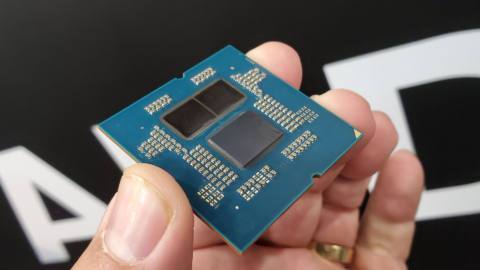
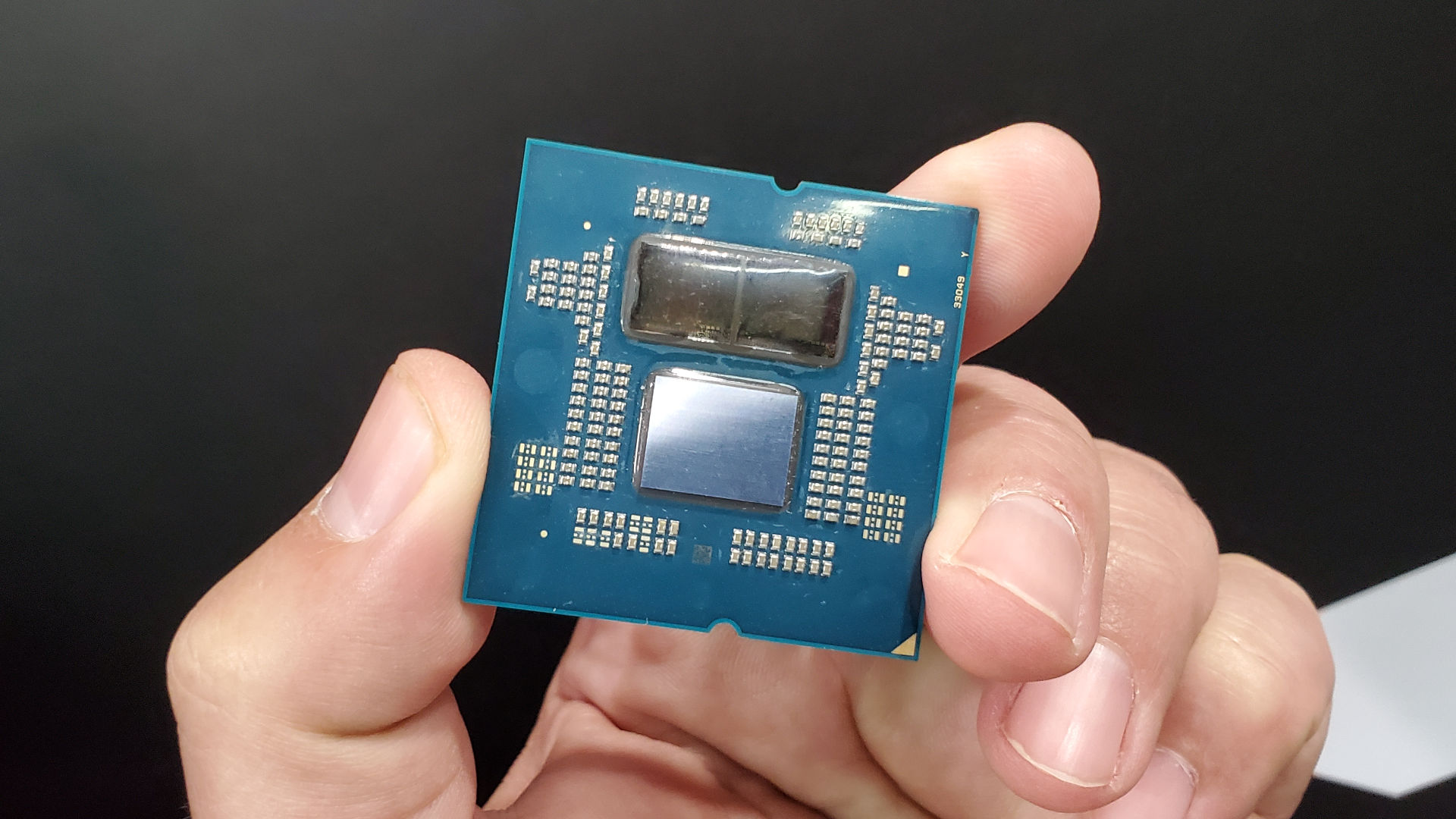

CPUs don't normally look very cool, even the biggest and best gaming processors you can buy. That's because the chips are hidden underneath a thick heat spreader or, in the case of laptops, totally covered by a big heatsink. So to get a look at what the processors actually look like, you usually have to rely on the chip makers providing images of them. Well, AMD decided it would do one better than that and literally just stick the raw CPUs in hour hands for us, and now you, to gaze at.
Dave, Jacob, and Andy are all busy in Taiwan at the moment, checking out all of the latest PC hardware and peripherals on display at Computex 2024. One of the biggest events so far has been AMD's Zen 5 architecture launch, powering the new Ryzen 9000 and Ryzen AI 300 series of desktop and mobile processors.
Going by the name Granite Ridge, the desktop range of Zen 5 Ryzen CPUs sticks to the standard approach that AMD has been using for the past five years—one or two CCDs (Core Complex Dies) and a single IOD (Input/Output Die), all packaged together on a square circuit board.
As you can see in the images above, the Ryzen 9 9950X sample (though it could be a 12-core Ryzen 9 9900) looks very much like a Ryzen 9 7950X, but that doesn't really matter. It's incredible to think that each CCD comprises billions of transistors, made on TSMC's N4 process node, which form 8 processing cores and 32MB of L3 cache.
The larger IOD lets the two CCDs communicate with each other but it also hooks them up to the RAM in the motherboard, as well as the main NVMe SSD, graphics card, and some USB ports. It also sports a little integrated GPU to handle basic graphics duties.
It's a bit of a shame that you can't quite see inside the chiplets but you could use your imagination or better still, just take a gander at the Strix Point sample we were given.
That's the codename for the new Ryzen AI 300 series of chips with up to 12 cores, 24 threads, and an integrated GPU with 16 compute units (CUs). Better known APUs, as AMD calls them, you find these inside gaming laptops, a few SFF prebuilt PCs, and handheld gaming PCs.
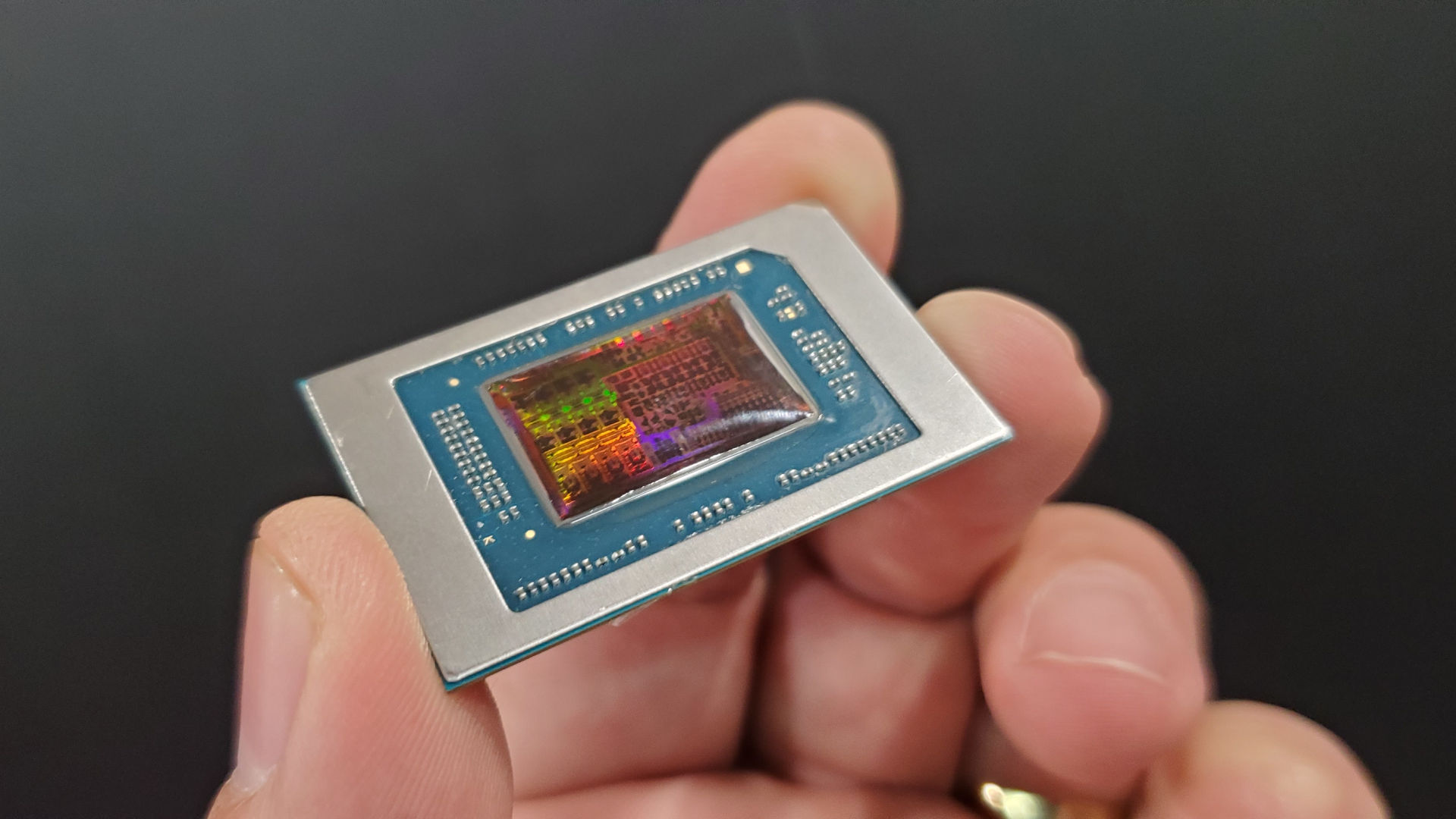
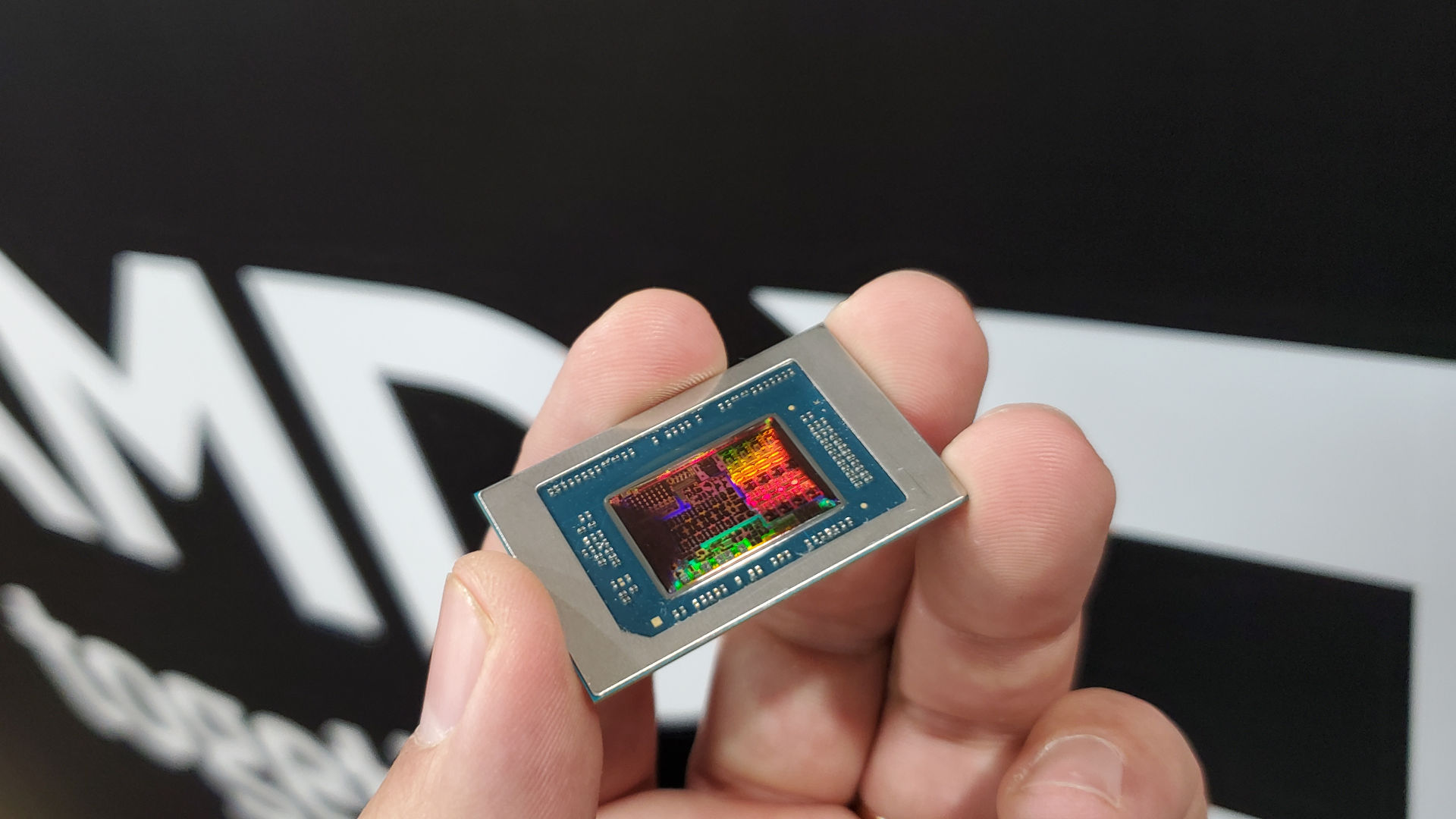
Now you really can see inside this particular chip—the large block on the left-hand side is the CPU cores, the GPU is roughly in the centre, and the NPU (an AI accelerator) is at the bottom-right of the die. In the second image above, the chip has been rotated, so the positions of each block are reversed.
APUs that are targeted at gaming, such as the Z1 Extreme in the new ROG Ally X or the semi-custom chips that power the PlayStation 5 and Xbox Series X/S, dedicate most of the chip's area to the GPU. With Strix Point, the CPU side of things is notably larger than the graphics part, though to be fair, it is only a 16 CU processor.
But if you want something big then how about a CPU design for AI servers and data centers? AMD also announced a new EPYC series, codenamed Turin and it's packing up to 13 chiplets. Which just looks ludicrous when you see one in the flesh, so to speak.
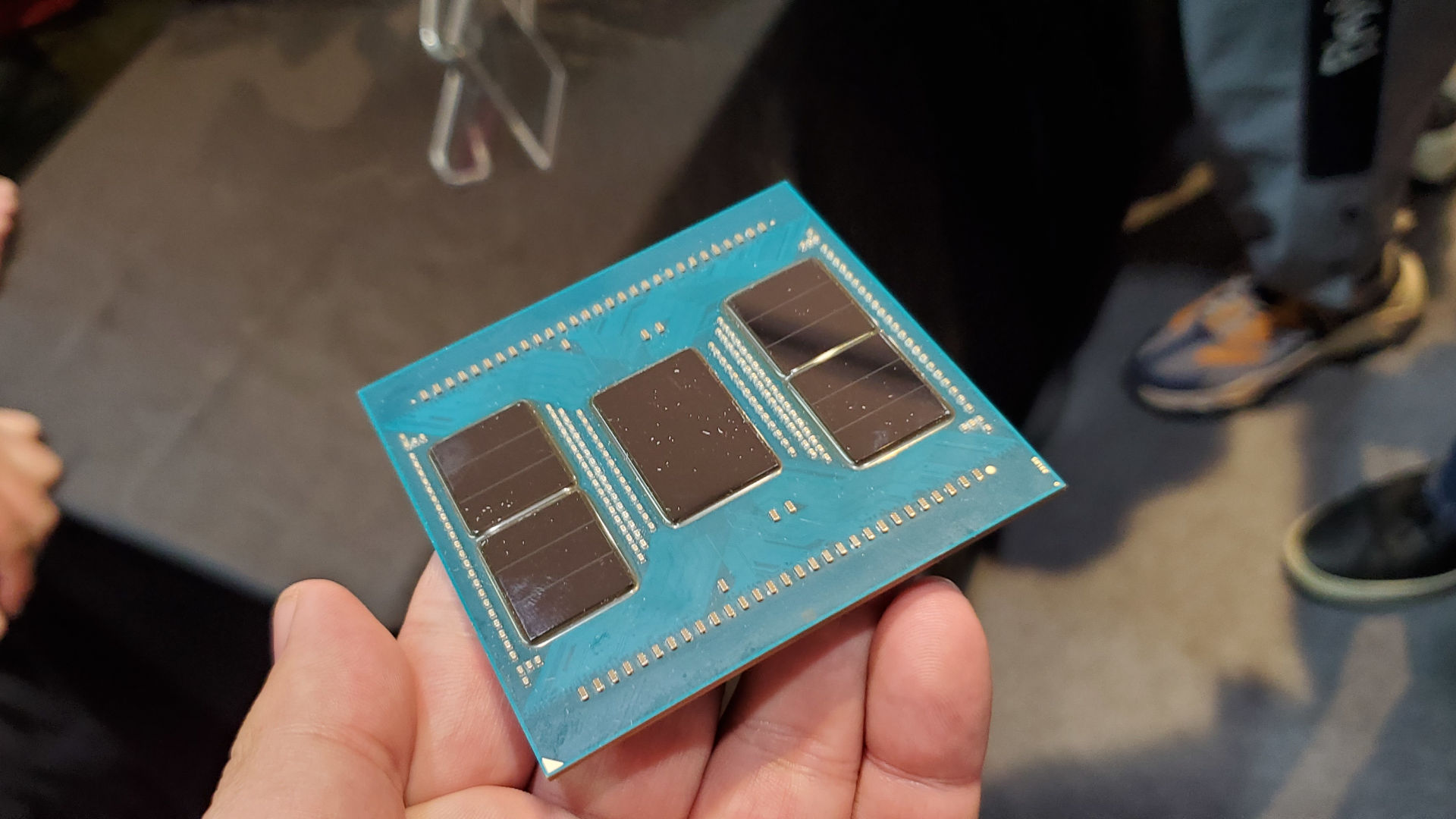
Depending on which Zen 5 EPYC model this is, you're potentially looking at 192 cores—all packed into a single processor. That's one seriously sweet CPU. Shame it's rubbish for gaming and costs more than an entire gaming PC, but who really cares when it has that many cores?






